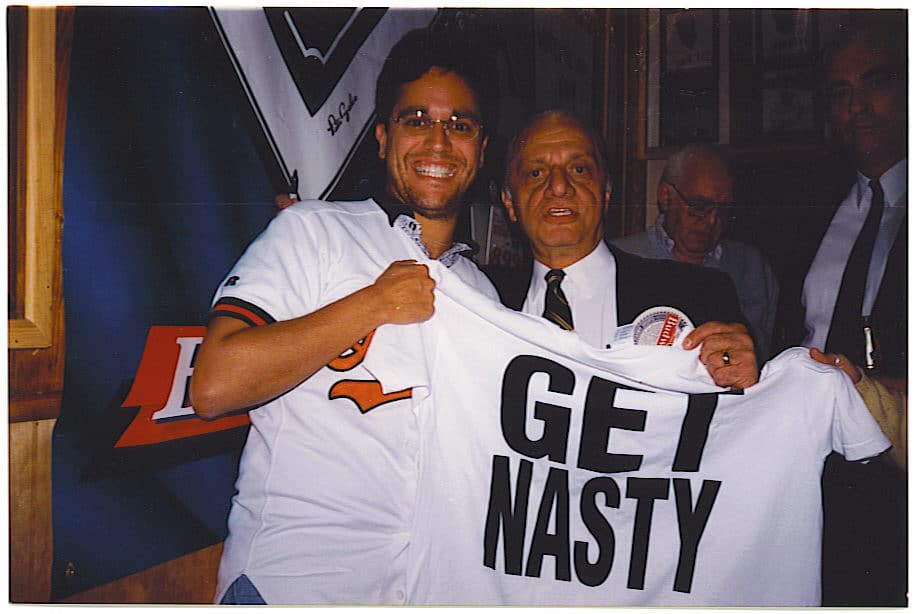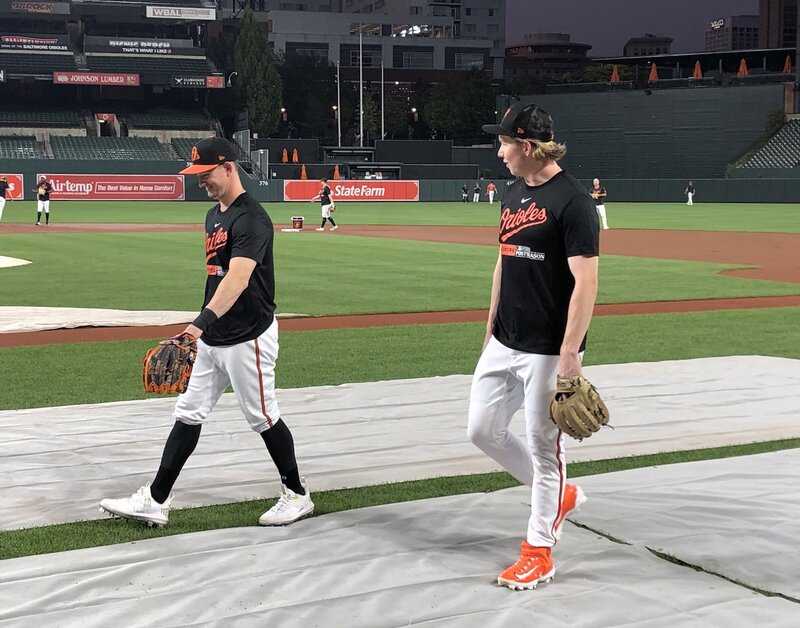(Originally published as a prelude to the “Free The Birds” walkout in Sept. 2006, this is Part 14 of a 19 Chapter Series on how Baseball and the Orioles berthed WNST.net. The stats is this blog were updated in March 2009.)
The opening of Camden Yards, about to celebrate its 17th anniversary, has been tainted by the stain of being a place where a LOT of bad baseball has been played over these years.
 The numbers are the numbers: Since OPACY’s opening, the team’s overall record has been 1285-1399 (.478 overall). At Memorial, they were 3202-2812 from 1954 through 1991 (.532).
The numbers are the numbers: Since OPACY’s opening, the team’s overall record has been 1285-1399 (.478 overall). At Memorial, they were 3202-2812 from 1954 through 1991 (.532).
The actual “homefield advantage” that the Orioles boasted at Memorial was 1686-1310, a whopping .562 percentage of victories.
Camden Yards, meanwhile, has found the Orioles with an overall 1285-1399 record over 17 years (.479 percentage). But the record since 2000, when Angelos’ regime had finally purged remaining remnants of previous ownership like Cal Ripken, Mike Mussina and 50 years of community goodwill plus the most beautiful stadium on earth:
634-822 or a .434 winning percentage since the turn of the century.
Despite the Orioles robust .532 winning percentage through 1991, the realities of leaving Memorial Stadium were unquestioned.
All you need to do is go back to that final day, on Oct. 6, 1991. You KNOW you didn’t want to see 33rd Street go. But there was a part that was ready to welcome in the fresh new downtown feeling of baseball.
And as bad as it hurt that October, it felt that good to be in that new ballpark six months later.
 Matter of fact it felt DAMN good to be from Baltimore on April 6, 1992.
Matter of fact it felt DAMN good to be from Baltimore on April 6, 1992.
Put yourself in that place and let your mind go back there to that day.
Smell the smells, hear the sounds and remember seeing the city and the Inner Harbor come to life in such a “big league” way.
We went from cow town to becoming Las Vegas for baseball literally overnight.
As my Pop would’ve put it, in slight Eckman-ese: “That place put Baltimore on the map!”
It wasn’t just about the stadium or the location. It was the psychology of how it made you feel this: “WOW…we’ve REALLY arrived as a COOL city” kinda feeling.
Baltimore always had that gritty, blue-collar workaday quality and now people could actually come into this city on a summer weekend and enjoy boating, the harbor, the Aquarium, the restaurants and the nightlife.
Many cool things to do and an image that FAR surpassed whatever preconceptions about Baltimore that the world might have had before The Warehouse was erected as the summer home for Major League Baseball.
And people from all over the country could wrap it around a weekend trip that included something for everyone. All that Baltimore had to offer was alive and well and visible on ESPN “SportsCenter” 81 nights each summer.
“Look at the BBQ from Boog’s, see the Holiday Inn sign, look at the majesty of The Warehouse and the Inner Harbor just two blocks away and the crab cakes and the Aquarium and the blah, blah, blah.”
I don’t think I need to tell you how cool I think Baltimore STILL is: I live two blocks from Camden Yards and two blocks from Hooters and two blocks from Federal Hill. NO ONE, and I MEAN NO ONE, LOVES THIS CITY MORE THAN ME!
But they sold this place — and I’m NOT saying they’re wrong, but it WAS a sell job on TV and in magazines and in newspapers and pretty much everywhere — as THE PLACE TO BE to watch a baseball game.
If someone could do Cooperstown OR baseball at Camden Yards (in what was before thought to be “dumpy-old-Baltimore”) they’d probably opt to see Cal Ripken here. And when you could do BOTH via driving for a few hours, NOW you’ve got magic.
How many people who consider themselves baseball fans around the country can say they’ve been to Camden Yards

































